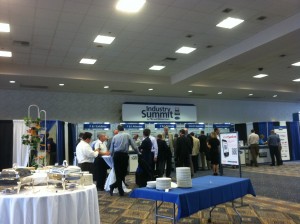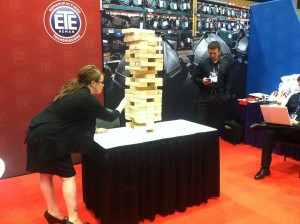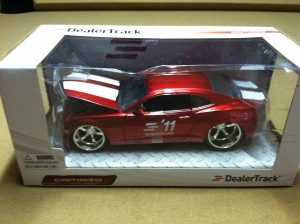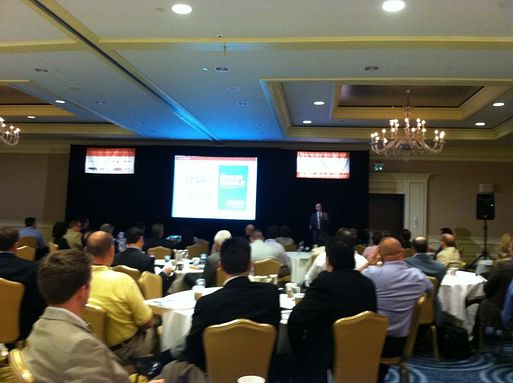 I’ve had the iPhone 5 and iOS 6 for 5 days now so I thought I’d write a mini-review of my thoughts on both. This is certainly NOT a comprehensive review. Many of those exist already. These are just my personal impressions.
I’ve had the iPhone 5 and iOS 6 for 5 days now so I thought I’d write a mini-review of my thoughts on both. This is certainly NOT a comprehensive review. Many of those exist already. These are just my personal impressions.
It’s light. – The iPhone 5 is certainly lighter than any previous iPhone. I like this feature as I typically carry my phone in my pocket. It’s hard to feel and sometimes I can’t even remember which pocket it’s in. That being said, I don’t get the impression that it’s less durable. In fact, one of the biggest complaints about it, according to Gizmodo who analysed the chatter about it, is the fact that it is too light.
It’s fast. – I can tell the difference in speed between the iPhone 5 and the iPhone 4S. I also had a Samsung Galaxy S III and it is certainly on par with that. This is in line with Mashable’s recent article comparing the speed of the two.
LTE rocks. – The one thing I LOVED about the Samsung Galaxy S III was the LTE ability. The iPhone 4S still used 3G and it was very slow. Sometimes painfully so. The new LTE integration rocks. Seeing as I recently moved to Chapel Hill, NC (which has great LTE coverage presumably due to UNC and it’s student body), I have excellent LTE coverage. Being that I did not where I lived in California, I love this.
It’s unlocked out of the box. – Not that I ever want to do business with or have a phone with service on AT&T but, according to the Huffington Post, the Verizon version of the iPhone 5 comes unlocked straight from the factory. It’s nice to know but I doubt I will ever need it. However, that being said, when the iPhone 6 (or 5S) comes out, I have double the market of people to sell it to, which is nice. Personally, if I were going to pay full price for the phone and I had AT&T service, I would buy the Verizon version and use it on AT&T since it comes unlocked whereas the AT&T version does not.
Facebook Integration. – Being a social media guy, this was a huge deal for me. The iPhone Facebook app sucks. Really sucks. It’s painfully slow. The ability to post to Facebook straight from my phone is great. It’s easy and painless. You can also use Siri to do it just like you can with tweets. I don’t really use Siri but it’s nice to know that I could if I wanted to. Another benefit to the Facebook integration is authorizing apps. In previous versions of the OS, when you wanted to authorize an app to access your Facebook account, it would flip open a Safari page and you had to type in your e-mail address and password to complete the authorization. In iOS 6, it still flips open a Safari page but because your Facebook account information is on your phone, it authorizes it and returns to the app, similar to what happens with logging into a website or connecting a website to Facebook while logged in to Facebook on your computer.
Do Not Disturb – I love this! It’s very nice to be able to set DND for specific times and not get an e-mail received alert at 2am (since the early morning hours are typically when retailers seem to think is the best time to send e-mails). If you add people to your favorites, it will allow those calls to come through (like your wife, kids, or whomever else you like) and block the rest.
Maps. – Suck. Yes, they do. Very much so. I attempted to get directions to a place that was about 5 miles away or less. It gave me directions to a place in Texas. Yeah, big fail. No matter how hard, or how specific, I got. Texas came up every time. Apparently, Apple is a Texas fan. Maybe it is because everything’s bigger there or they didn’t want to mess with Texas.
App Store – I like the new presentation of the iTunes/app store. It’s easier to navigate and you get more information without jumping back and forth between the search results list and actual information about an app. You just flip through the search results similar to how you would in the Music app on the phone with the information right on every result.
EarPods – I have yet to open or try these but they look cool and come with a storage case. It’s hard to want to use them in lieu of my Beats by Dre Studio headphones. Just saying.
New connector – Personally, I don’t have any issues with it. Yes, I know it is inconvenient and forces you to pay $29 for the adapter (assuming you want to use your old accessories with your new iPhone). I like that you can insert it into the iPhone 5 any way (ie. there’s no “right way” as there is with the old connector. My guess is that Apple got sick of replacing damaged iPhones from people attempting to force the 30-pin connector upside down. Of course, it could also be about money. Or both.
Cases (or lack thereof) – I’m not a fan of cases so I don’t really care. If you’re a case fan, I’m sure there will be plenty of cases available for you soon. Personally, I think the iPhone 5 is very well designed and nice looking as is. By adding a case, you increase the phone’s weight and that is one of the features I like the most. If you tend to drop your phones or are just a paranoid person, buy the insurance from your phone carrier (typically $8-$10/mo) OR and even better (and cheaper) way to insure your phone is to add it to your homeowner’s policy as a rider. In the past, I have added my previous iPhones to my State Farm policy with a zero deductible, replacement value policy for $24 PER YEAR. Beat that.
Screen – It is longer. The best benefit of this is that you can have 5 rows of apps on a page versus 4 from before. For those who have a lot of apps or have a lot that they use often, it is nice to be able to stick those extra apps on the home screen. As for “brighter” and “more vibrant” – well, I can’t really see much of a difference. It’s still a nice screen like the iPhone 4S, however, and it seems a little more responsive since the touch functionality is integrated into the screen now rather than being a separate layer.
iCloud – I had this on my 4S. I paid the $25. It’s nice that it backs everything up and, when I got my iPhone 5, I was able to immediately restore all my apps and settings via iCloud over wi-fi so I didn’t have to wait until I got home to sync my phone. One of the features that I don’t like (and never have) is the inability to actually sync your music and physically have it on your phone without having to stream it and/or download every freakin’ song straight to my phone from iCloud. It would be much faster and more convenient to just be able to put it on my phone, as you could in the past, and not be dependent on having a wi-fi connection or eating up allocated data over LTE.
Anyways, those are my initial impressions. It ended up being longer than I anticipated, and there are plenty of features I didn’t cover, but that’s mainly because I have never used them – like AirPlay and AirPrint, etc.
Should you upgrade from your iPhone 4S? That’s up to you. It’s very similar to the decision you may, or may not, have had to made when the “New iPad” came out and you owned an iPad 2. I, personally, chose to keep my iPad 2 and NOT upgrade it. In this case, however, I chose to upgrade (obviously). Partially because I use my phone WAY more than I use my iPad and partially because I like having the newest technology (I am an early adopter. Very much so.). The choice is up to you but there are TWO features that made my decision quite easy: lighter and LTE. That was enough for me.



